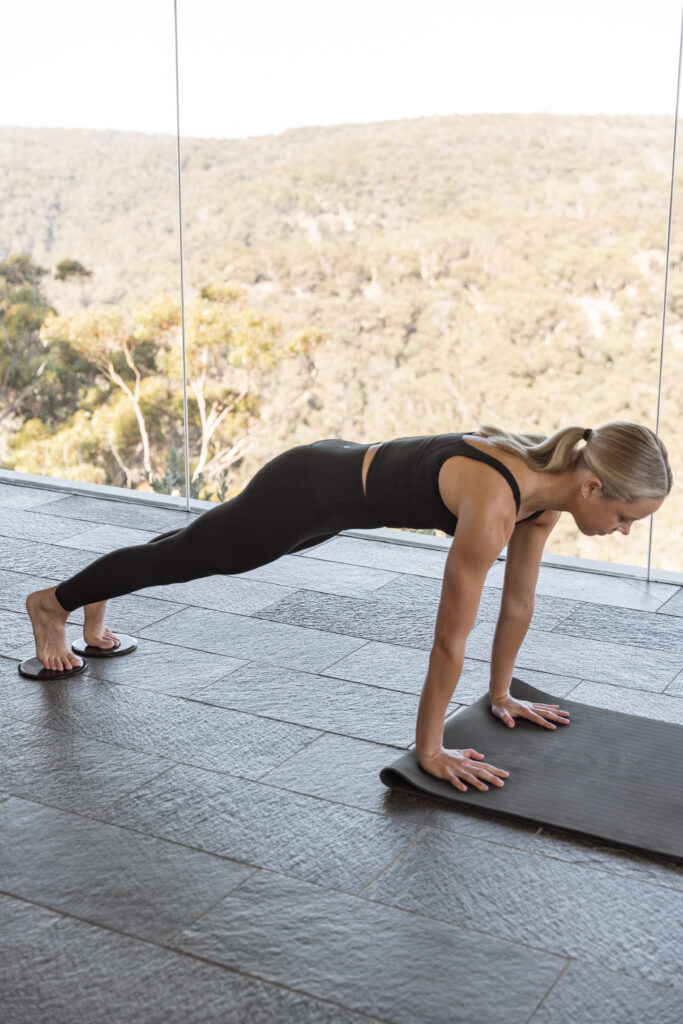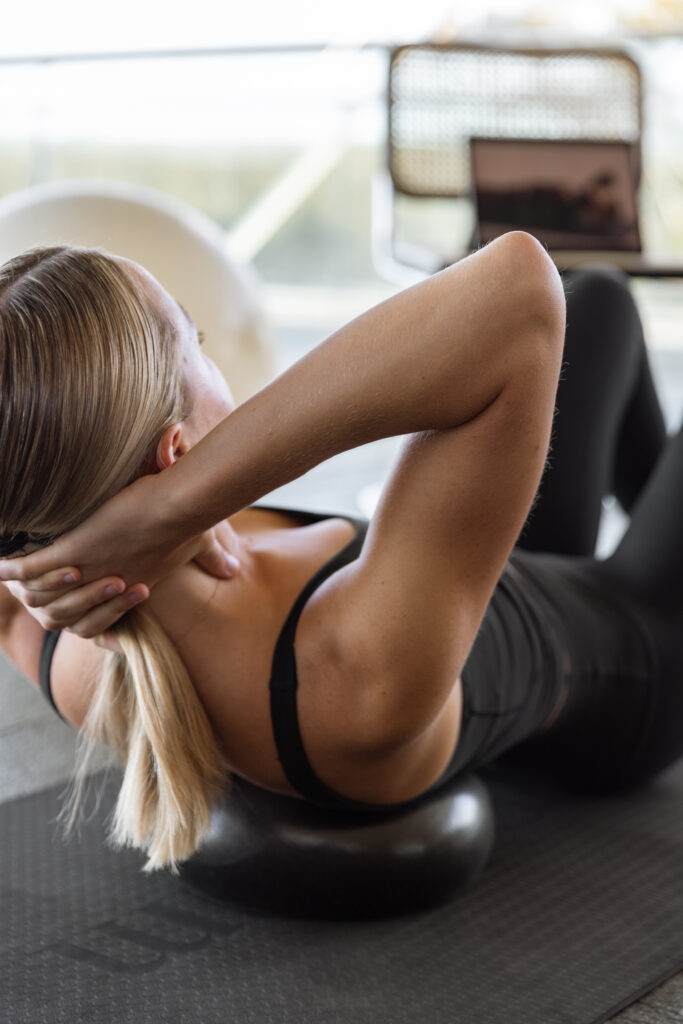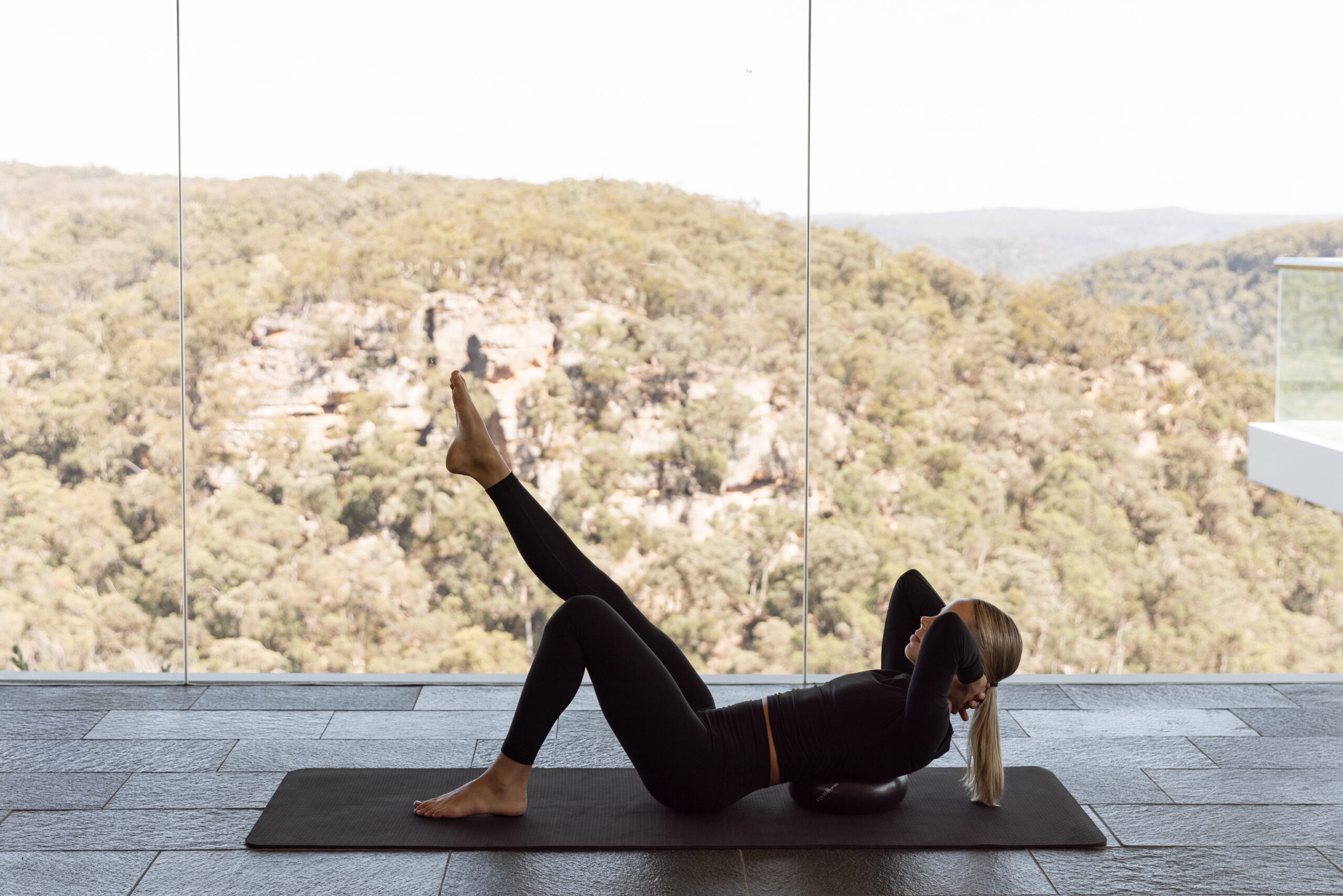Are you a beginner in Pilates? Well this article is for you! Discover these 5 easy Pilates exercises for first-time beginners and how Pilates can benefit your overall wellbeing.
Why is Pilates such a good workout for those beginning their fitness journey?
Pilates is unique in that no matter your fitness level or physical ability, the exercises we practise will challenge you and support your day-to-day function. Pilates is safe and supportive for those entering their fitness journey, while highly challenging and effective for advanced movers or elite athletes. As you improve your strength and stability with Pilates, you are deepening the muscle connection, which further fatigues and tones your muscles. Put simply, the stronger you become, the harder your muscles are working.
Exercise forms such as weight lifting, running and HIIT strengthen our global muscles, whereas Pilates targets our slow twitch, stabilising muscles which support our joints, stability, balance and posture. The main benefits of this is to build strength and tone through a total body workout, without causing stress on the joints and body. So whether you are new to exercise or not, your transition to Pilates will challenge your body in a completely new way. You will experience less pain and imbalances in your day-to-day performance, improve your flexibility and start to move more efficiently. This ability to feel strong and move well, free of pain instils a new sense of confidence and motivation in everything you do.


What are the main things people should keep in mind when starting Pilates?
For anyone new to Pilates, start by forgetting everything you think you know. Find trust in the process and believe that you can change. Movement is about feeling comfortable and safe. These emotions ensure the body is relaxed and ready to move and find balance. The body and mine both need to feel at ease.
To prepare yourself emotionally – set realistic goals, find something you enjoy and a teacher you trust. Moving your body releases a sense of empowerment and confidence that travels through everything your entire day. Practising consistent, considered movements not only promotes physical benefits, but you will develop a sense of motivation and commitment, build confidence and experience a sense of empowerment, promoting your mental and emotional wellbeing.
And physically – return to the basics which set you up to move well. Your form and set-up positions are essential to connecting and engaging your muscles. Connect your mind with your breath, and your breath with your movement to reduce tension in the body and engage your deep core muscles which control your movements.
Move with intention and purpose.
How often should someone practise these five moves?
Consistency is the key to results. There is no “quick fix” to strengthen, tone and transform your body. But when we work our muscles consistently, through controlled, targeted movements, our muscles fatigue and gradually strengthen to achieve a more defined body. The first step is commitment, and the key is consistency.
Just 20 minutes of considered, controlled movements everyday, can ensure every muscle in your body is functioning to support your overall strength, mobility and alignment. Fluidform teaches low impact, high repetition movements, so your body – muscles and joints, are warming up and working from the moment you step onto your mat. These targeted movements fire the muscles quickly – an effective way to burn your muscles in just a few sequences. Repeating these sequences daily builds a routine – both mentally and physically, teaching your muscles to fire more efficiently. Try making 20 minutes of movement your daily non-negotiable – you will find yourself feeling more energised and creating healthier habits within your daily life.
What are the five exercises for first-timers? [step-by-step]
If you are new to Pilates, start by focusing on realigning and correcting any imbalances in the body. Office workers, new mums, weight lifters, runners – our lifestyle impacts our postural alignment. Pilates brings your body back into alignment by working your muscles through a neutral spine position. This is the ideal position for your body. When you find and maintain neutral, you have the ability to activate, strengthen and tone your muscles.
Now you know the benefits of Pilates (for all bodies and abilities), start with these top 5 “simple” exercises to activate your glutes, core, upper and lower body. You will need a small Pilates ball, or a small pillow or rolled up towel.
Roll out your mat, forget everything you think you know, and come with me!
1. Pelvic curl – this movement helps to mobilise the spine, realign your hips and activate your legs and glutes. Mobilising your hips and activating your glutes are essential to engaging and strengthening your core.
- Come lying on your back with your knees bent and feet placed hip-width apart on the mat, arms reaching long by your side.
- Deep inhale and as your exhale, start to tilt your pubic bone towards your spine and slowly roll up, each vertebrae at a time into a bridge position.
- Feel your glutes connect as you reach your through your knees, keeping your hips lifted to their highest position.
- As you roll back down to the mat, imagine you’re placing each vertebrae of your spine onto the mat one after the other – your tailbone to be the last to rest on the mat.
- Find your neutral spine, before you prepare to roll up.
Repeat this 10 times.
2. Chest lift
- Lie back and over your ball (pillow) placed between your shoulder blades, with both legs bent and both feet pressing down and into your mat.
- Inhale in this position and exhale to lift your face and chest up to the ceiling. As you lift up, you want to feel your heels pushing down and into the mat, and at the same time pulling back towards your bottom. This ensures you find a deeper connection through your hamstring and in your lower abdominals.
- Maintain connection through your feet as your chest lifts up and over the ball. In this position, you want to maintain a neutral pelvis position with a small gap in your lower back. Your hips and pelvis remain still as you lift and lower from your chest.
Repeat this 10 times.
4-point kneeling – strengthens your arms, shoulders and back muscles. In this position, your core must remain active and engaged.
3. 4-point kneeling knee hovers
- Come to a 4-point kneeling position, both hands under your shoulders, 10 fingers pressing into the mat and both knees beneath your hips.
- Tuck your toes under, inhale and on the exhale press through your hands and lift your knees to just hover one inch off the ground.
- Hold for five seconds then lower your knees back down to tap the floor. Inhale and on the exhale lift your knees up again, just an inch off the floor.
Repeat this 10 times.
4. 4-point kneeling to plank hold
- Come into your 4-point kneeling position, with hands beneath your shoulders and knees beneath your hips, find your neutral pelvis position.
- Inhale and as you exhale, extend one leg back and long behind you.
- Inhale and as you exhale, extend the other leg long to meet it. Keep your pelvis in line with your shoulders, maintain equal pressure through all 10 fingers and feel lifted through your chest.
- Hold this plank position for five seconds, before lowering each leg back into 4-point kneeling.
Repeat this 10 times.
5. Lunge – a fundamental Fluidform movement, the lunge challenges your balance while strengthening your feet, legs, hips and spine.
- Step into a lunge position with one leg back and straight, your front leg bent with your knee tracking directly over your front toes. Your arms are long and by your side.
- Hinge forward from your hips and tilt your pelvis back to find your neutral spine position.
- Push through your back heel to find a long line from the top of your head to the back of your heel. Keep your chin slightly tucked.
- Maintain equal pressure through your front toes and heel and stay lifted through the arch of your foot. The position of your feet will create a stable base of support for your kee to fire your glutes.
- Inhale and as you exhale, keep your arms long as you raise your hands up, arms in line with your ears. Lift and lower your arms as you maintain your lunge position.
Repeat this movement 10 times, before switching legs.





